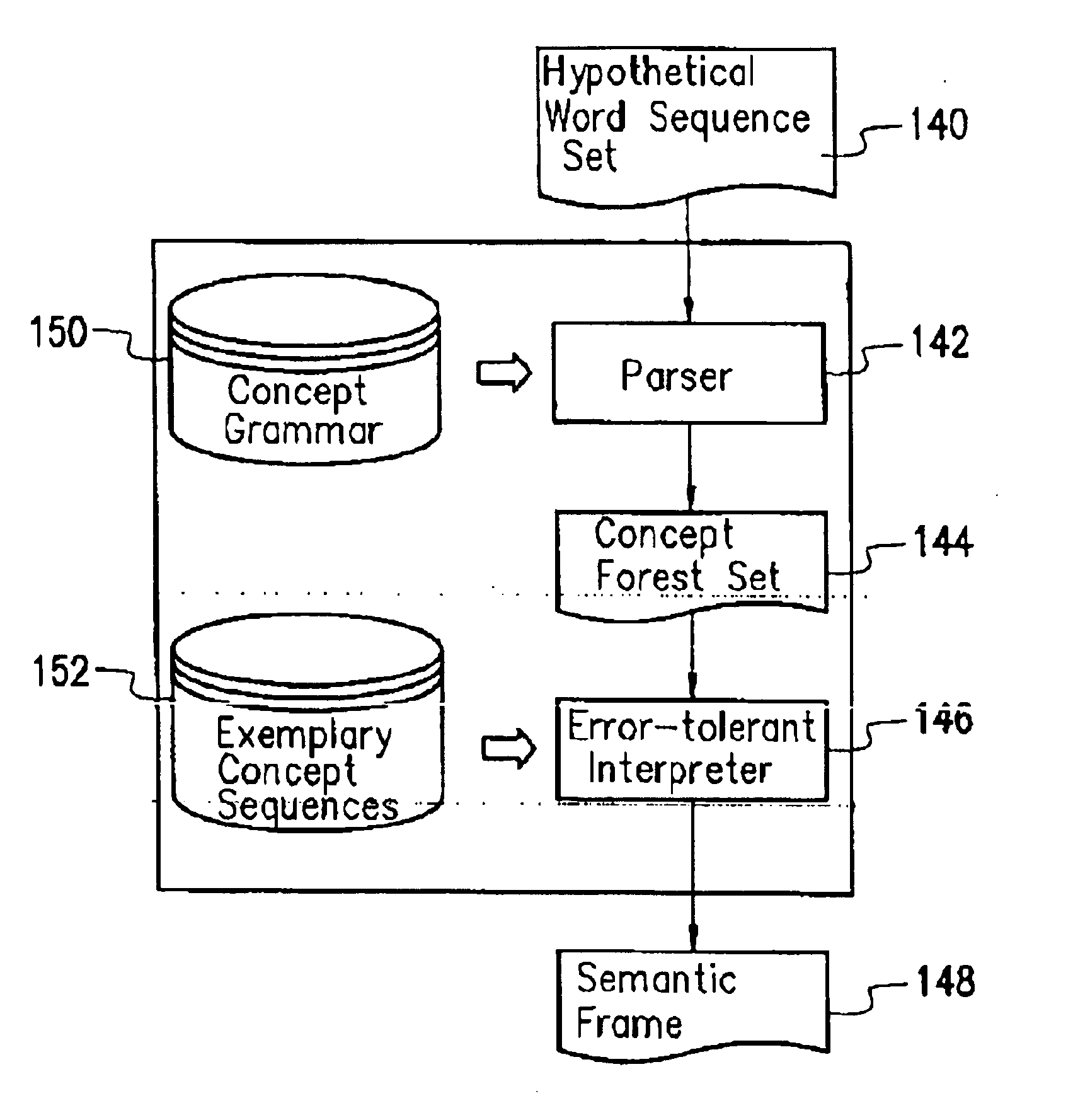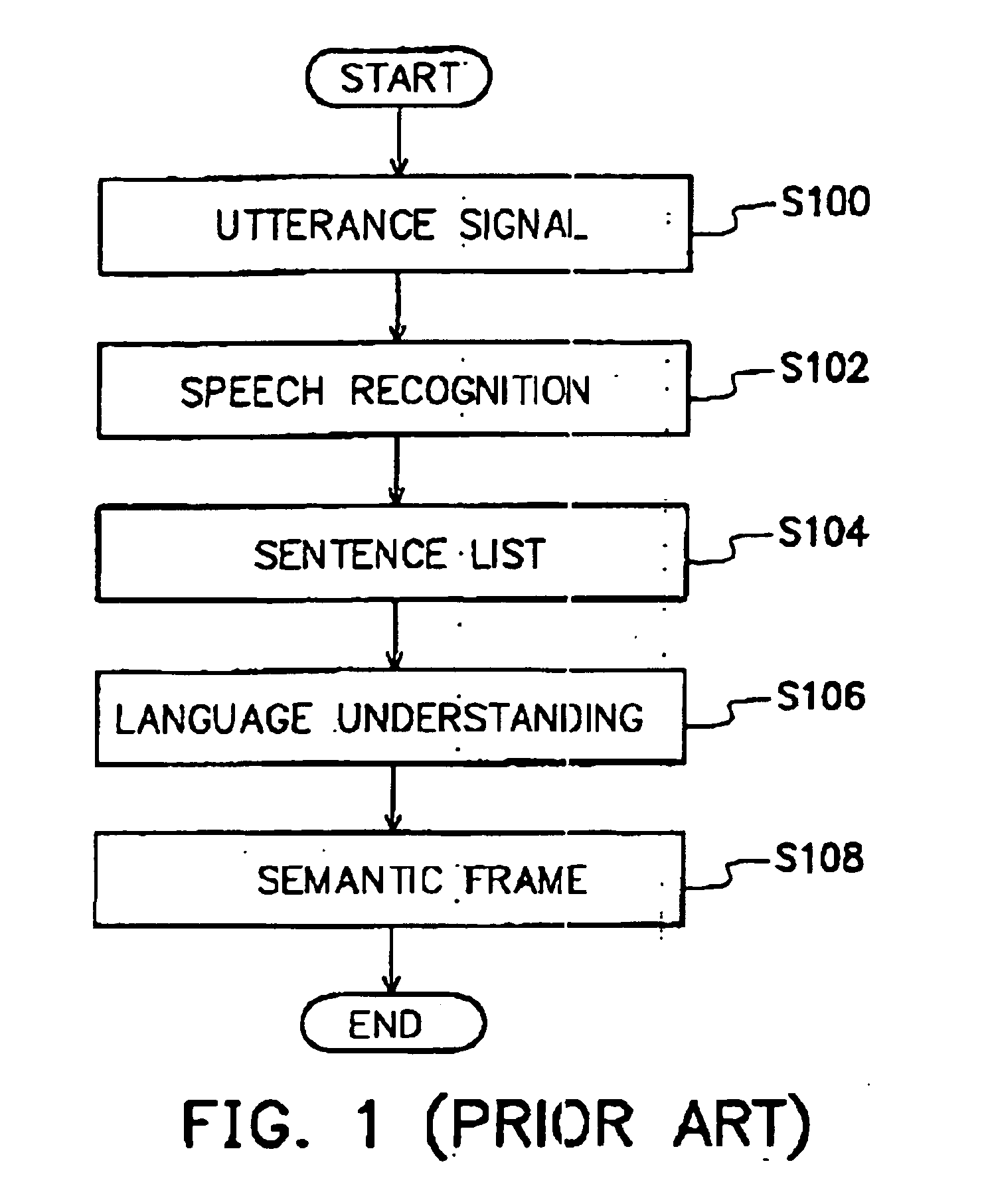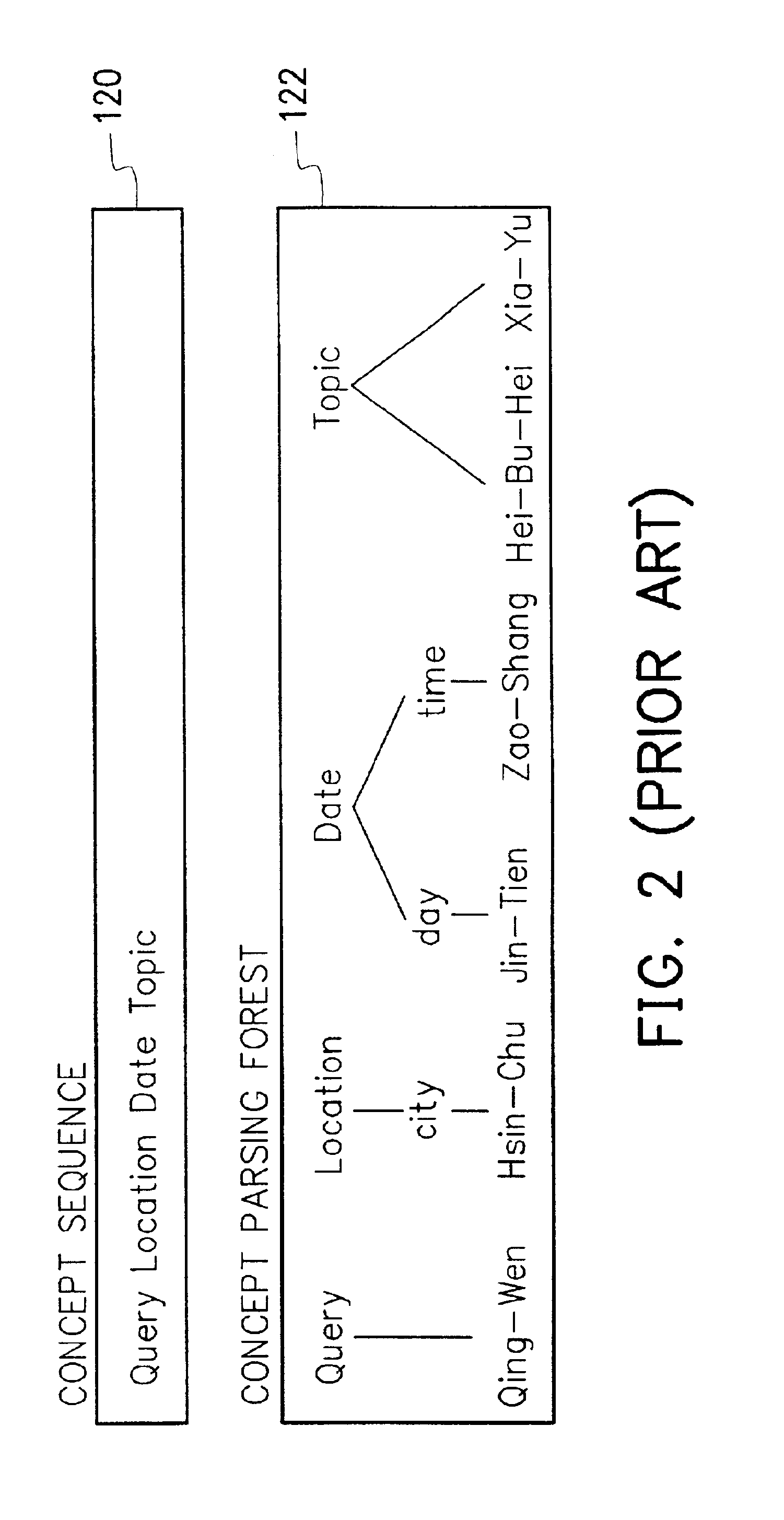Method for probabilistic error-tolerant natural language understanding
a natural language and probabilistic error technology, applied in the field of probabilistic error-tolerant natural language understanding, can solve the problems of affecting the use of other systems, affecting the accuracy of natural language translation,
- Summary
- Abstract
- Description
- Claims
- Application Information
AI Technical Summary
Problems solved by technology
Method used
Image
Examples
Embodiment Construction
[0031]To determine whether there is any error for speech recognition, the embodiment designs a language understanding method including a database of concept sequence examples in addition to a grammar for parsing a sentence into concepts. The concept sequence example database is obtained by parsing the text corpus. Each example represents a legitimate concept sequence recognized by the system. System developers can directly add some legitimate concept sequences into the database to replenish the deficiency of the text corpus.
[0032]Thus, the process of understanding the utterance of a user is represented by the probability formula: (W^,F^,C^,K^,E^)=argmax(W,F,C,K,E) P(W,F,C,K,E❘U)
[0033]U is the articulation characteristics of the utterance of a user. W is one hypothetical word sequence output by the speech recognition module. F is one possible concept parse forest of W defined by system grammar. C is the corresponding hypothetical concept sequence of F. K is one exemplary concept se...
PUM
 Login to View More
Login to View More Abstract
Description
Claims
Application Information
 Login to View More
Login to View More - R&D
- Intellectual Property
- Life Sciences
- Materials
- Tech Scout
- Unparalleled Data Quality
- Higher Quality Content
- 60% Fewer Hallucinations
Browse by: Latest US Patents, China's latest patents, Technical Efficacy Thesaurus, Application Domain, Technology Topic, Popular Technical Reports.
© 2025 PatSnap. All rights reserved.Legal|Privacy policy|Modern Slavery Act Transparency Statement|Sitemap|About US| Contact US: help@patsnap.com



